Chriscrawfordphoto
Real Men Shoot Film.
Just curious, Chris. In your Fort Wayne thread as well, you mentioned returning to shooting film in your Leica. What's behind that decision? Thats's a curious (not hostile!) question.
Retro-Grouch asked me this in my thread with my photos of my cat, but I thought the answer to his question would make a nice thread of its own.
My Nikon LS-8000ED film scanner died a couple years ago and I couldn't afford the outrageous prices people are demanding for them now to replace it. I ended up buying a Nikon Coolscan V to scan 35mm with but rarely used it because if the film wasn't PERFECTLY flat (and home-processed B&W film almost never is), the scans would not be sharp all over. It was so frustrating, so I just stopped shooting film. By then most of my work was color anyway.
I have a good amount of Leica gear that has been gathering dust, plus some other 35mm gear. Earlier this year, I decided to write a tutorial on color negative scanning to go along with my tutorials for B&W neg scanning and color transparency scanning. It is something people have been asking me for. I had not shot any color neg film in 20 years; the film photography that I did in color was all slide film because slides are easier to scan. I did not want to use an old negative for the tutorial; I thought it would be better to use a modern, currently available film for the example scans. I got a couple rolls of Kodak Portra 400 and shot some photos to use for the tutorial. Here are a couple of the shots I scanned from that film, using my Nikon Coolscan V and Vuescan:
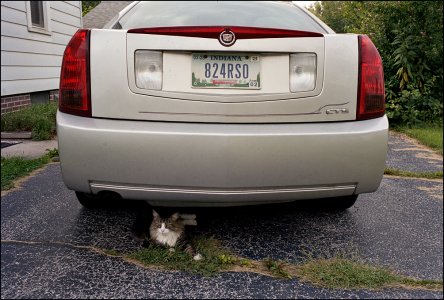

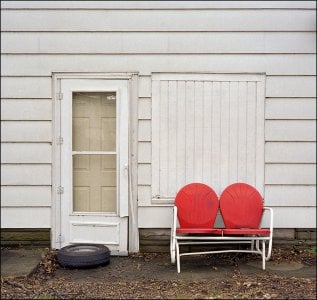
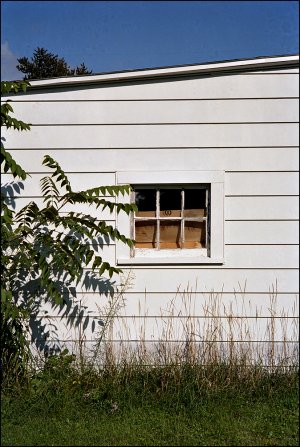
I liked the way the film rendered, and wanted to shoot more; but the files were an extreme pain to edit. Vuescan just plain doesn't do a good job of inverting the scans of color negatives and correcting for the orange base-color of the film; so a lot of heavy editing in Photoshop is needed. As I detailed in this thread, I went looking for a lab that could develop and scan the film for me, giving me 16 bit unedited TIFF files that I could edit myself and that would have resolution equal to what the Nikon scanner gives. Most labs give relatively low-resolution scans, auto-edited by the minlab's software, and saved as JPEGs that do not take much editing without falling apart. I found a lab that uses a Noritsu scanner that handles color negs well and that offers the option of 4500dpi 16 bit tiff files. I sent them a couple of test rolls and was impressed. The files were so much easier to edit than those from the Nikon scanner and it only cost $20 a roll for the scans (plus $7 to develop the film). I sent them seven more rolls, which is what the recent color film shots I have posted are from. I have another 5 rolls to send them this week.
Chriscrawfordphoto
Real Men Shoot Film.
It has been a lot of fun shooting with my Leica gear again. I have two screwmount IIIf bodies and two M bodies (M4-2 and M3) and a small collection of lenses, all of which were gathering dust. I was thinking of just selling it all, but I was afraid I'd regret it if I did. I had sold all my Leica gear ten years ago after I had a stroke and needed the money, and was able to replace some of it after my son finished college and made it possible for me to concentrate on my fine art photography without worrying about paying the bills and feeding us. Prices had gone up A LOT since I sold my old stuff, which really hurt. There are a few things I likely will never be able to replace  but I do have a nice set now, and wanted to use it again.
but I do have a nice set now, and wanted to use it again.
The only issue now is that film and processing are expensive. Portra 400 is about $18 a roll, and then $27 per roll for developing and scanning adds up. I'll keep doing it as long as I can afford it; when I run out of money, I'll just go back to all digital till I earn more.
The only issue now is that film and processing are expensive. Portra 400 is about $18 a roll, and then $27 per roll for developing and scanning adds up. I'll keep doing it as long as I can afford it; when I run out of money, I'll just go back to all digital till I earn more.
wlewisiii
Just another hotel clerk
I can sympathize with this. I have a local lab with a Noritsu scanner and they've been adequate to my needs thus far as I get back into film. But since I got my 60th birthday present (my Nikon S2 and a delightful handful of Nikkors & FSU lenses) I've been going through much more film and have been pondering what to do about scanning because my budget is limited. I'm currently paying that lab $10.54 for developing and basic scanning (with tax). Higher rez scans would be, IIRC, $5.00 more. I may try that but $15 a roll becomes prohibitive fast for me.
I really need to find a less expensive yet acceptable home scanning solution. I'd be more inclined to shoot predominantly black and white and home develop it as well but I remember the agony of an old Epson flatbed.
I really need to find a less expensive yet acceptable home scanning solution. I'd be more inclined to shoot predominantly black and white and home develop it as well but I remember the agony of an old Epson flatbed.
wlewisiii
Just another hotel clerk
I get Fuji color film for $8~9 a roll, Ektar if I'm feeling rich at $15 a roll. I remember when the Fuji was $5 for 3 rolls at the supermarket checkout ... 
Chriscrawfordphoto
Real Men Shoot Film.
Chriscrawfordphoto
Real Men Shoot Film.
I get Fuji color film for $8~9 a roll, Ektar if I'm feeling rich at $15 a roll. I remember when the Fuji was $5 for 3 rolls at the supermarket checkout ...
I remember those days. Hell, I remember buying Portra for $7 a roll 22 yrs ago; and that was expensive professional film!
I'm in a unique situation. I'm in bad health. I had a stroke in 2013 and a few years after that almost died from a bacterial infection in my lungs that left them permanently damaged. I'm tired all the time, and if I go spend half a day shooting, I spend the next 2 days sleeping. I don't have a lot of time.
At the same time, for the first time in my life, money is not a big concern. When my son graduated from university in 2020, my savings were gone and I had sold off a lot of my gear to pay the bills so he could stay in school and would not have to work. I was sick enough by then that I'd stopped teaching and was not doing much commercial work. He got a job as a software engineer for a local company that is paying him a ton of money without working the insane hours a lot of tech companies demand of their employees. He told me that I no longer had to work for a living. He bought a house for us and pays the bills. I use my income from selling prints and from my tutorials to buy film and processing.
Right now, my time is more valuable than money. I have plenty of money, and little time; so I don't mind paying for the high-quality scans or the expensive film that I like. I will likely sell prints of some of these photos I'm shooting on film so the high-priced scans are worth it if someone wants a large print.
pvdhaar
Peter
Whether film is cheap or expensive also depends on how much money you have to spend. In the 70's, I had to save up pocket money to buy a film and have it processed and printed; that was when film was expensive.I get Fuji color film for $8~9 a roll, Ektar if I'm feeling rich at $15 a roll. I remember when the Fuji was $5 for 3 rolls at the supermarket checkout ...
wlewisiii
Just another hotel clerk
Glad to hear you're able to keep shooting then. I have gotten some help from your web site recently regarding using light meters more effectively. Getting back into film and unmetered cameras, that's been needed  I'm probably going to try one of those gadgets that hooks onto a macro lens on my DSLR and see how well that works. At least it's not risking too much $$$
I'm probably going to try one of those gadgets that hooks onto a macro lens on my DSLR and see how well that works. At least it's not risking too much $$$ 
Thanks for the shots in this thread!
Thanks for the shots in this thread!
Prest_400
Multiformat
This is an interesting discussion Chris!
Having here been quite many years since my teens I was roughly familiar with your situation and seen how your son grew through you shared images. Once you become an adult time flies by so about the last I recall about y'all was him aceing it at college and getting a great job. Happy that the money struggles are left behind. I have been well shielded in my upbringing, but growing during the great recession does leave a mark I would say.
In 2017 I found a lab in the UK that did provide large resolution TIFFs from their Noritsu without any extraordinary surcharge, which cost roughly those USD18-20 per roll in total and did the same approach as you. Scan big, TIFF and edit after. Brexit got effective for goods moving in 2021 so it did play a role into why I halted C41.
I mostly shoot Medium format and did B&W for the period 2020-22. Shot a roll of Ektar in Spring 2022 which took me a year to get developed and I loved the results; back to really liking the film look with the plus of medium format. I do however shoot not so much and am very selective with it.
Stocked up around Xmas 2021 ($8/120 roll), and wow, now I have gotten used to the prices where (Europe) a propack 120 of Kodak color is about USD 75.
Color negative is particularly popular and the new age labs do a lot of work, but for us who want more control of the process it's outsourcing a lot as well as the cost (they edit) for even 2400px high images adds up, and low resolution scans leave a lot behind IMO, if the input is 120.
I am stocking up film for a long trip, and looking into what to do after. Not used to have 30-50 rolls to work on.
Having here been quite many years since my teens I was roughly familiar with your situation and seen how your son grew through you shared images. Once you become an adult time flies by so about the last I recall about y'all was him aceing it at college and getting a great job. Happy that the money struggles are left behind. I have been well shielded in my upbringing, but growing during the great recession does leave a mark I would say.
In 2017 I found a lab in the UK that did provide large resolution TIFFs from their Noritsu without any extraordinary surcharge, which cost roughly those USD18-20 per roll in total and did the same approach as you. Scan big, TIFF and edit after. Brexit got effective for goods moving in 2021 so it did play a role into why I halted C41.
I mostly shoot Medium format and did B&W for the period 2020-22. Shot a roll of Ektar in Spring 2022 which took me a year to get developed and I loved the results; back to really liking the film look with the plus of medium format. I do however shoot not so much and am very selective with it.
Stocked up around Xmas 2021 ($8/120 roll), and wow, now I have gotten used to the prices where (Europe) a propack 120 of Kodak color is about USD 75.
Color negative is particularly popular and the new age labs do a lot of work, but for us who want more control of the process it's outsourcing a lot as well as the cost (they edit) for even 2400px high images adds up, and low resolution scans leave a lot behind IMO, if the input is 120.
I am stocking up film for a long trip, and looking into what to do after. Not used to have 30-50 rolls to work on.
Chriscrawfordphoto
Real Men Shoot Film.
Glad to hear you're able to keep shooting then. I have gotten some help from your web site recently regarding using light meters more effectively. Getting back into film and unmetered cameras, that's been neededI'm probably going to try one of those gadgets that hooks onto a macro lens on my DSLR and see how well that works. At least it's not risking too much $$$
Thanks for the shots in this thread!
I'm glad my tutorials helped you. I'm getting ready to wrote some on metering for film photography, but I'm a little behind in getting them done.
I thought about getting one of those devices for camera scanning, too. There's one on Amazon that costs around $65 or $70 that comes with different mounting rings and extension tubes so it can work on a lot of different lenses and digital sensor sizes. Nikon makes one but its mainly for their fullframe cameras and their own macro lenses. I shoot Olympus m4/3 cameras now. I tried camera scanning just using a macro lens and using the film carrier from my dead film scanner to hold the film, but I could not get good results. Always one side of the picture would be sharp and the other soft. I know my lens isn't decentered; I think I just couldn't get everything perfectly aligned. The camera-scan device that attaches to the lens looks like it would keep everything aligned. If you get one, let us know how it worked out.
wlewisiii
Just another hotel clerk
I'm looking at this one on Eprey. I'd get the version with the light source to make things easier & use the macro lens I have for my D810. It's a manual focus one so I might have to break down and get an AF one but those aren't terribly expensive either. I'll find out.

When I do, I'll post a review with results here and probably also at Cameraderie It's just a matter of budget right now.

35mm Film Digitizing Adapter+LED Light Set Negative Scanner Holder as Nikon ES-2 | eBay
The set is specially designed for negative copying and converts film to digital files. It can be used to photograph 35mm film and is compatible with the following select Canon, Nikon and Sony lenses1: Canon EF 100mm f/2.8L Macro USM Lens [requires supplied Adapter 4# and Adapter 2# (2pcs)] Canon...
www.ebay.com
When I do, I'll post a review with results here and probably also at Cameraderie It's just a matter of budget right now.
Chriscrawfordphoto
Real Men Shoot Film.
I'm looking at this one on Eprey. I'd get the version with the light source to make things easier & use the macro lens I have for my D810. It's a manual focus one so I might have to break down and get an AF one but those aren't terribly expensive either. I'll find out.

35mm Film Digitizing Adapter+LED Light Set Negative Scanner Holder as Nikon ES-2 | eBay
The set is specially designed for negative copying and converts film to digital files. It can be used to photograph 35mm film and is compatible with the following select Canon, Nikon and Sony lenses1: Canon EF 100mm f/2.8L Macro USM Lens [requires supplied Adapter 4# and Adapter 2# (2pcs)] Canon...www.ebay.com
When I do, I'll post a review with results here and probably also at Cameraderie It's just a matter of budget right now.
That's the same one I saw on Amazon! Your Ebay price is better, though. Amazon wants $10 more for it.
wlewisiii
Just another hotel clerk
Interesting to know that! 
Chriscrawfordphoto
Real Men Shoot Film.
This is an interesting discussion Chris!
Having here been quite many years since my teens I was roughly familiar with your situation and seen how your son grew through you shared images. Once you become an adult time flies by so about the last I recall about y'all was him aceing it at college and getting a great job. Happy that the money struggles are left behind. I have been well shielded in my upbringing, but growing during the great recession does leave a mark I would say.
In 2017 I found a lab in the UK that did provide large resolution TIFFs from their Noritsu without any extraordinary surcharge, which cost roughly those USD18-20 per roll in total and did the same approach as you. Scan big, TIFF and edit after. Brexit got effective for goods moving in 2021 so it did play a role into why I halted C41.
I mostly shoot Medium format and did B&W for the period 2020-22. Shot a roll of Ektar in Spring 2022 which took me a year to get developed and I loved the results; back to really liking the film look with the plus of medium format. I do however shoot not so much and am very selective with it.
Stocked up around Xmas 2021 ($8/120 roll), and wow, now I have gotten used to the prices where (Europe) a propack 120 of Kodak color is about USD 75.
Color negative is particularly popular and the new age labs do a lot of work, but for us who want more control of the process it's outsourcing a lot as well as the cost (they edit) for even 2400px high images adds up, and low resolution scans leave a lot behind IMO, if the input is 120.
I am stocking up film for a long trip, and looking into what to do after. Not used to have 30-50 rolls to work on.
I agree on medium format. The Noritsu scanners, even set to their highest resolution, don't give as much resolution on 120 film as they do on 35mm. For 645, you get 4824x3533 pixels, while 35mm film scans at 4492x6774 pixels. Here's a PDF from Noritsu about the HS-1800 scanner that the lab I use has.
My son is 26 years old now. Its hard to believe, he grew up so fast. Seems like it was yesterday that he was still a little kid. This shot was in 2003; he was 3 years old and shooting with a disposable camera.
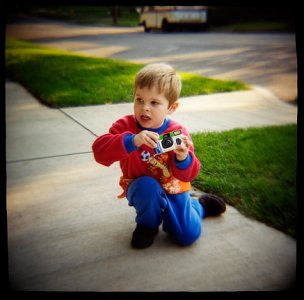
pixie79
Member
I am retired age, heart, whatever. I refuse to pay those prices! I have a shoe box of color film, mostly 120, some Velvia 100' Ektachrome. All way out of date.Tried a few rolls, It's OK. I won't PAY! Period.
I discovered way back 2005, Digital for pro work. Pentax Optio 3.5mp! I made prints at lab, 8x12! I do have an old DSLR Nikon bought for $60! with lens!! Mostly I shoot tiny cameras, no weight! Left camera in South Africa (rats!). My daughter sent me Zip file 2000 pix!
Yesterday had a long walk, few rests! Dragged my Nikon L4 $5! many images, no scanning, straight posts, some slight darken, tiny edits!
I discovered way back 2005, Digital for pro work. Pentax Optio 3.5mp! I made prints at lab, 8x12! I do have an old DSLR Nikon bought for $60! with lens!! Mostly I shoot tiny cameras, no weight! Left camera in South Africa (rats!). My daughter sent me Zip file 2000 pix!
Yesterday had a long walk, few rests! Dragged my Nikon L4 $5! many images, no scanning, straight posts, some slight darken, tiny edits!
Attachments
Prest_400
Multiformat
Memory colors and a nice square shot! I was also a kid back then and picked up a first digital compact in 2003. For some reason lately have been having a lot of dejà vù about those years. It's perhaps to analogous events (wars) and moving into IT for which I had a vocation back then.I agree on medium format. The Noritsu scanners, even set to their highest resolution, don't give as much resolution on 120 film as they do on 35mm. For 645, you get 4824x3533 pixels, while 35mm film scans at 4492x6774 pixels. Here's a PDF from Noritsu about the HS-1800 scanner that the lab I use has.
My son is 26 years old now. Its hard to believe, he grew up so fast. Seems like it was yesterday that he was still a little kid. This shot was in 2003; he was 3 years old and shooting with a disposable camera.
Indeed, but that resolution goes into the good enough territory and I can print up to 16x20" (machine C-prints from a huge lab). In a way I do sometimes realise it might be again peeping, but it is nice to maximise quality.
In my case, I shoot 6x9 so conviniently the Noritsu does almost double that horizontal resolution, IIRC 35MP by the pixel count.
Last year I found another lab that also does TIFF and full 6x9 out of a Frontier; not as high res as the Noritsu. Many photographers romanticise this lab scanner but honestly it's coloration is quite nice; at the end if it provides a good base and the lab isn't too expensive it makes sense. I am sitting on 5 rolls of C41 so should send these in soon.
Another note about TIFF, some labs did a comparison of their results and Frontier outputs 8 bit, but still, it's a way to bypass their editing and in some cases I have gotten a bit tight Jpegs that don't act nice towards grain. As far as I understand, these scanners always do processing and it's hard to zero in settings. Even requesting Tiff I once got overly sharpened scans.
mconnealy
Well-known
I started shooting digital for color because of the high prices of color films. Now, b&w film prices are also climbing, with Fomapan currently at seven bucks. As it turns out, I don't like the experience of shooting the digital cameras I have, and good ones cost more than I am willing to spend. I decided to try shooting half-frame 35mm. I already had a Mercury II-CX which I like, but it is not very versatile with no rf and non-interchangeable lens. So, I got an Olympus Pen-Ft. A test roll of Kentmere 400 gave me quality I liked, and the 24-frame roll produced 53 images! I'll likely get some bulk Kentmere so I can make up shorter rolls. Here's the Pen-FT and some pictures from it:

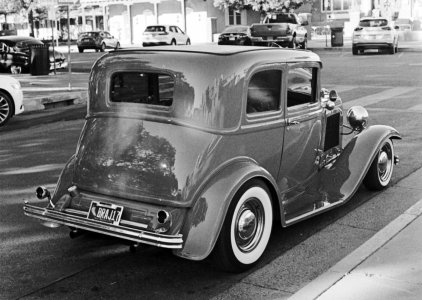
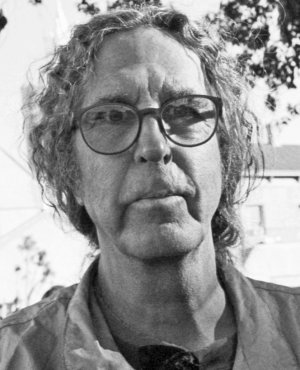
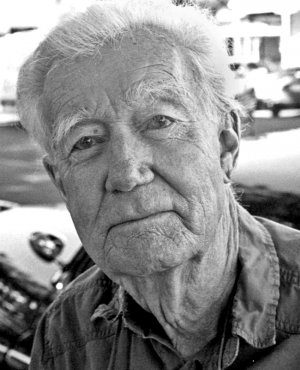




Chriscrawfordphoto
Real Men Shoot Film.
I started shooting digital for color because of the high prices of color films. Now, b&w film prices are also climbing, with Fomapan currently at seven bucks. As it turns out, I don't like the experience of shooting the digital cameras I have, and good ones cost more than I am willing to spend. I decided to try shooting half-frame 35mm. I already had a Mercury II-CX which I like, but it is not very versatile with no rf and non-interchangeable lens. So, I got an Olympus Pen-Ft. A test roll of Kentmere 400 gave me quality I liked, and the 24-frame roll produced 53 images! I'll likely get some bulk Kentmere so I can make up shorter rolls. Here's the Pen-FT and some pictures from it:
View attachment 4828319View attachment 4828320View attachment 4828321View attachment 4828322
Those look great. Grainy, but very sharp!
I've always loved Olympus cameras. My first good camera was an Olympus OM-G, an entry-level 35mm SLR that my dad bought for me when I was 11 years old. I've shot Olympus's micro four thirds cameras for several years now. The first one I bought was the Digital Pen-F! I've always wanted to try one of the old half-frame Pen-F SLRs, but have never seen one in person.
mconnealy
Well-known
The only film camera I ever bought new was a little Olympus Pen EE model about 1961, also a half-frame. In spite of its apparent simplicity the little p&s made great pictures and it put a lot of images on a roll of film.Those look great. Grainy, but very sharp!
I've always loved Olympus cameras. My first good camera was an Olympus OM-G, an entry-level 35mm SLR that my dad bought for me when I was 11 years old. I've shot Olympus's micro four thirds cameras for several years now. The first one I bought was the Digital Pen-F! I've always wanted to try one of the old half-frame Pen-F SLRs, but have never seen one in person.
I would like to be following a similar economic strategy with my 6x4.5 cameras. I have a Dolly SuperSport and a couple Kodak Duo Six20s that will put sixteen images on a roll of 120. Unfortunately, the framing numerals on the paper backing of modern roll films is so faint that they can't be seen through the cameras' ruby windows.
Retro-Grouch
Mentor
Well, I never imagined my simple question would trigger so much discussion! I think, Chris, that your film cameras should be considered different tools in a toolbox that includes both them and digital. Your film results are very different, and in many ways feel more appropriate to some of your subjects. It's up to you; decide which one works best in any given situation.
Additionally, I think that too much attention is given on this forum to topics like film, lens, and scanning resolution. A strong image is a strong image, and higher resolution won't improve the viewer's experience of it substantially. By the same token, the best scan won't save a weak image. This reminds me of discussions years back about how certain photographers' images just wouldn't stand up to reproduction on the printed page. Personally, I feel that an image that's so entirely dependent on its technical quality is perhaps weak on the vision/content end. Not always, but often enough!
And I'm glad to hear that your son's success (a team effort, really) is enabling you to live without that financial sword over your head. Nothing stifles creative work like money woes. That "starving artist in a garret" routine is BS.
A parallel perspective: I'm substantially older than you, so I find myself in a position of "not enough time" simply by virtue of age, rather than health concerns. I don't have a big income or substantial savings, but, within reason, I buy the equipment I want (within reason!) and indulge my passion for photography to the fullest. It brings me tremendous joy, and in the time I have left, I want to experience quality, if not quantity.
Additionally, I think that too much attention is given on this forum to topics like film, lens, and scanning resolution. A strong image is a strong image, and higher resolution won't improve the viewer's experience of it substantially. By the same token, the best scan won't save a weak image. This reminds me of discussions years back about how certain photographers' images just wouldn't stand up to reproduction on the printed page. Personally, I feel that an image that's so entirely dependent on its technical quality is perhaps weak on the vision/content end. Not always, but often enough!
And I'm glad to hear that your son's success (a team effort, really) is enabling you to live without that financial sword over your head. Nothing stifles creative work like money woes. That "starving artist in a garret" routine is BS.
A parallel perspective: I'm substantially older than you, so I find myself in a position of "not enough time" simply by virtue of age, rather than health concerns. I don't have a big income or substantial savings, but, within reason, I buy the equipment I want (within reason!) and indulge my passion for photography to the fullest. It brings me tremendous joy, and in the time I have left, I want to experience quality, if not quantity.
Share:
-
This site uses cookies to help personalise content, tailor your experience and to keep you logged in if you register.
By continuing to use this site, you are consenting to our use of cookies.





